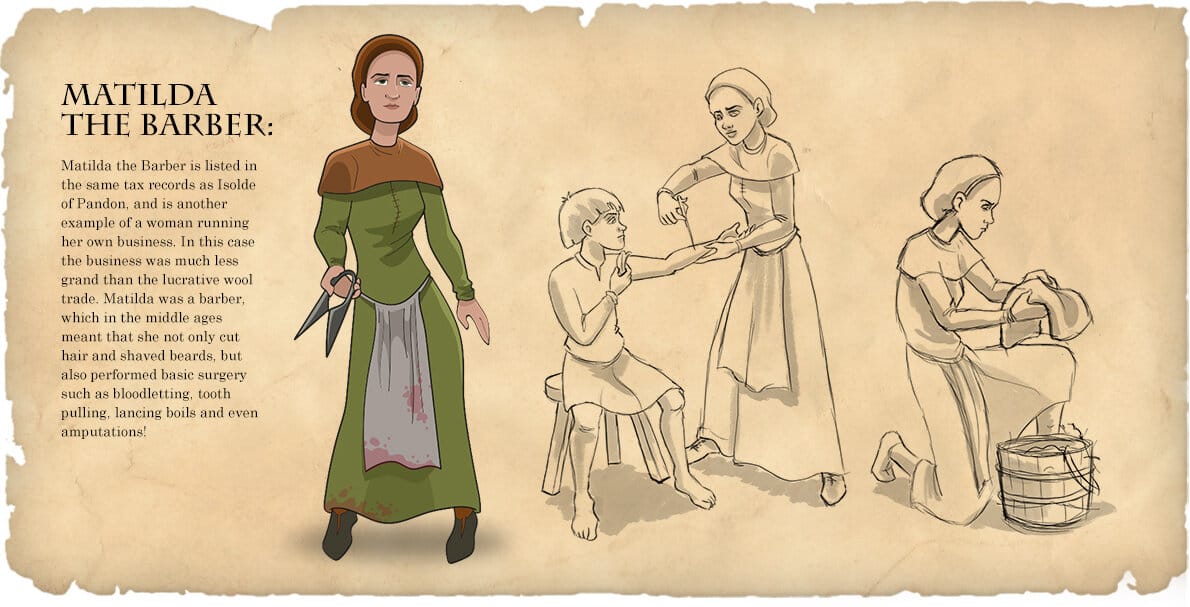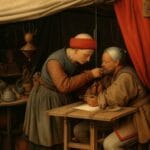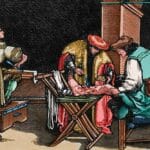Buckle up for a wild ride through the Middle Ages, where bloodletting was the go-to remedy and barbers moonlighted as surgeons. Join us as we dive into the hilarious world of Theodoric of York, a character that will make you question your medical knowledge. From his wacky treatments to the real-life practices that inspired them, we’ll uncover the fascinating truth behind his medieval antics and the evolution of medicine throughout history.
Theodoric of York: Medieval Barber
Remember that hilarious Steve Martin skit featuring Theodoric of York, the medieval barber-surgeon? Talk about a riot! But beyond the laughter, it actually shines a light on the reality of medical practices back in those days – and let’s just say, they were a far cry from what we’re used to!
Theodoric, with his questionable cures and reliance on outlandish theories, perfectly embodies the blend of ignorance and superstition that often characterized medieval medicine. For instance, remember when he talked about the caladrius bird? The belief was that this mythical creature could either heal you or seal your fate just by looking at you! And who could forget the classic bloodletting? Leeches were all the rage too – all based on the idea that our bodies needed a good balance of “humors.”
It’s no wonder Theodoric became such a hit! We’re naturally drawn to the peculiarities of medieval medicine, and the skit cleverly plays on that fascination. But beneath the humor lies a deeper message: a gentle reminder that blind faith in superstition has no place in healthcare. It encourages us to think critically and demand evidence-based approaches.
The Medieval Barber?
During the medieval period, barbers were also respected as medical practitioners who specialized in surgery in medieval times, and used a range of tools of the medieval ages to perform surgeries and bloodletting procedures.
They weren’t just your average hairdressers. Imagine a time when your local barber was also your surgeon and dentist! That’s what it was like in the Middle Ages. These barber-surgeons, as they were known, were jacks-of-all-trades when it came to health and hygiene.
People in those days believed that illnesses stemmed from an imbalance of fluids in the body. Their solution? Bloodletting! Barbers would make incisions or apply leeches to drain “bad blood,” hoping to restore their patients’ well-being. It’s a far cry from modern medicine, and unfortunately, often did more harm than good.
Think about it: no antibiotics, no sterile equipment, and limited anatomical knowledge. It’s no surprise that procedures like amputations, also performed by these barber-surgeons, often led to infections and even death.
But before we judge their methods too harshly, remember that these barbers were often the only source of medical care available to most people. They might not have had fancy degrees, but they filled a crucial role in their communities.
Medieval barbers are a fascinating example of how medicine and social practices evolve over time. They remind us that what seems logical in one era might appear outlandish in another. And hey, if nothing else, they give us a whole new appreciation for our modern healthcare system!
Theodoric of York: Hilarious SNL Character or Commentary on Medieval Medicine?
Theodoric of York, that wacky barber-surgeon brought to life by the one and only Steve Martin on Saturday Night Live, wasn’t just good for a laugh. He was a walking, talking (well, more like yelling) parody of the medical practices of the Middle Ages. Imagine a time when your doctor was more likely to pull out a rusty saw than prescribe an antibiotic!
This guy Theodoric, with his questionable hygiene and even more questionable cures, became famous for his unwavering belief in bloodletting. Headache? Bloodletting! Broken leg? Bloodletting! Plague sweeping through the village? You guessed it – bloodletting! He’d slap on some leeches, drain a pint or two, and call it a day. Of course, he always meant well (we hope!), but his methods were about as effective as, well, using leeches to cure a headache.
The brilliance of the Theodoric of York sketches lies in how they highlight the sheer absurdity of some medieval medical beliefs. We can laugh now (and we do!), but imagine living in a time when these treatments were considered cutting-edge. Theodoric serves as a humorous reminder of how far medicine has come and why relying on science and evidence, rather than superstition and leeches, is always the healthier option.
- SYBAU See You Baby Meaning: Gen Z Slang Evolves - July 1, 2025
- Unlock Your Inner Youth: Lifestyle Secrets for a Vibrant Life - July 1, 2025
- Decode SYBAU Meaning: Gen Z Slang Explained - July 1, 2025







Comments are closed.